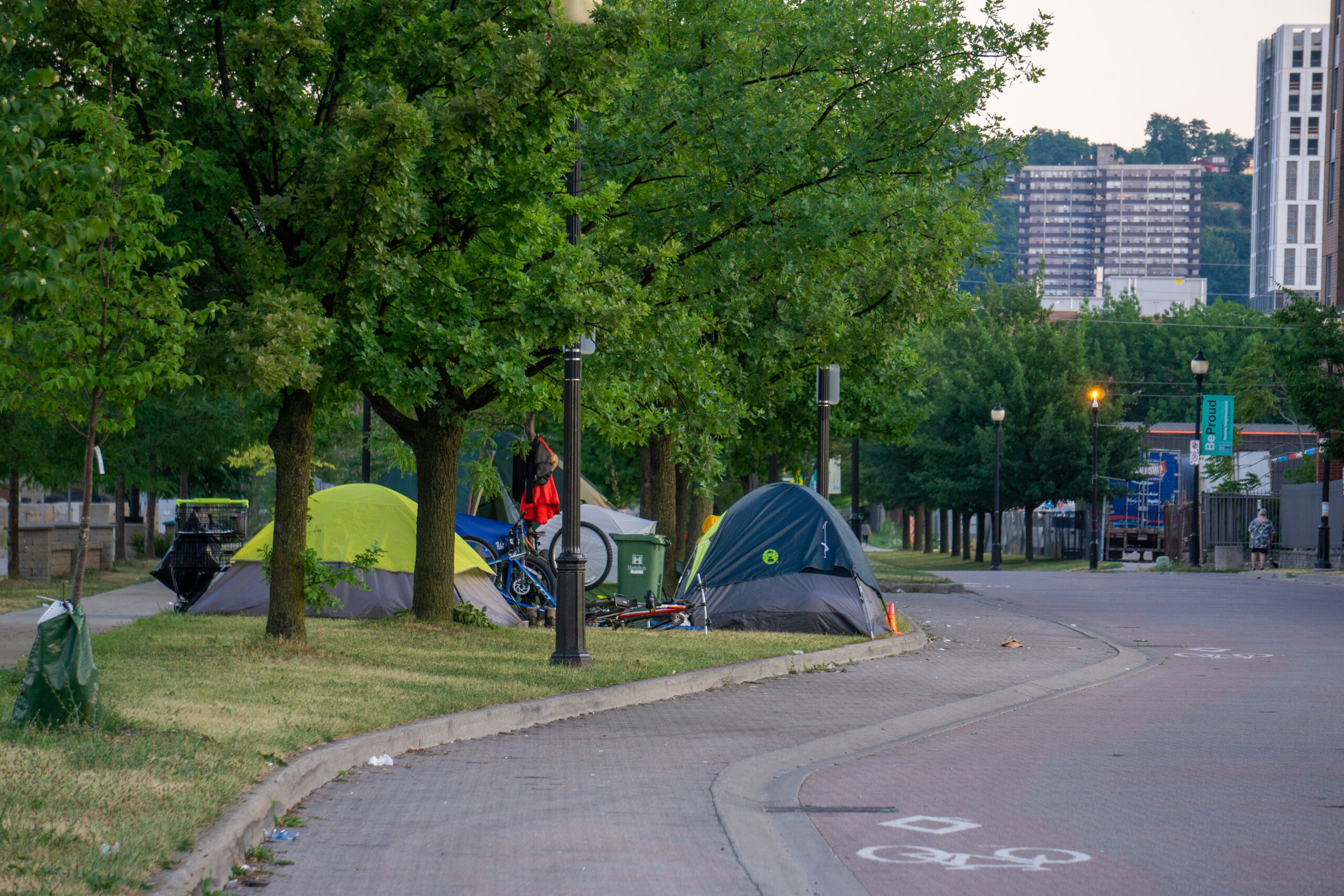As we await the decision of Ontario Superior Court Justice Andrew Goodman on an interlocutory [temporary] injunction regarding Hamilton’s homeless encampments, let’s take a look at the recent Prince George encampment ruling in British Columbia.
B.C. Supreme Court Chief Justice Christopher Hinkson’s ruling in Prince George (City) v Stewart, 2021 BCSC 2089 differs slightly from the previous B.C. Supreme Court decisions regarding encampments.
[Note: the B.C. Supreme Court is the trial level court in B.C., equal to the Ontario Superior Court.]
The ruling adds to the legal test of adequate shelter. It does not fundamentally change the equation. A municipality must provide adequate emergency shelter spaces to ensure people have a safe place to sleep and maintain the bare essentials of life. If municipalities fail to do so, homeless individuals have a limited right to erect a temporary shelter in public spaces.
Arguably, the test is now adequate and suitable shelter. A distinction with little difference.
Justice Hinkson’s ruling restates previous findings that there is no Charter right to housing. [paras 88 to 90] The ability to erect an encampment remains only permitted in the limited circumstance that an individual has no other options.
In Prince George, Justice Hinkson rules the municipality is failing to provide suitable low-barrier accessible shelter spaces, and therefore, the municipality cannot remove an encampment until it creates suitable shelter spaces.
The type of encampment is dependent upon the local climate. Justice Hinkson distinguishes the climate of Prince George from the previous B.C. rulings, “The cold is a more severe threat to life for the homeless in Prince George than in Victoria or Abbotsford.”
Prince George encampments can remain in place during daytime hours. Previous rulings in Victoria and Abbotsford allowed erecting temporary shelter only for the night. Tents were prohibited from remaining in place during the day. [The Prince George encampment includes structures made of plywood and other materials.]
Hamilton’s climate is slightly warmer than Prince George. Both share a Köppen climate classification of Dfb, humid continental climate. However, Prince George “is very close to (and once had) a subarctic climate (Dfc)”. Parts of Hamilton fit into the classification of Dfa.
The addition of an adequacy test adds clarity to how municipalities must respond to homelessness.
In the Victoria and Abbotsford cases, Justice Hinkson cited severe shortages of shelter spaces, well over 100 in each instance, as the reason for court intervention to restrain the removal of overnight sleeping in tents.
In Prince George, Justice Hinkson focuses upon the barriers of access to shelter spaces.
The ruling states 81 permanent shelter beds in Prince George, and approximately 80 encampment residents. The use of temporary beds could be expected to meet the thresholds of the previous B.C. rulings, depending on what constitutes a shortage. [The Hamilton case may provide some framework for determining a threshold for bed shortages restraining municipal bylaws.]
“It is apparent that very few of the emergency shelter beds are low barrier, and it appears that many of the homeless persons in the City are ineligible to stay in at least some of the shelters,” writes Justice Hinkson in paragraph 74. “While the City contends that the availability of 81 shelter beds in the City is sufficient to house the encampment occupants, I am not satisfied that these shelter spaces are in fact accessible to all of the occupants of the encampments.”
In paragraphs 92 to 95, Justice Hinkson addresses the arguments regarding the benefit of stable encampments to residents accessing services.
“While the advantages in the preceding three paragraphs are most desirable, I am unable to accept that such considerations alone can justify the occupation of property belonging to another,” Justice Hinkson concludes.
In the Hamilton case, Justice Goodman can consider the Prince George decision. It does not fundamentally differ from the other B.C. decisions and doing so does not prejudice either party in Hamilton.
Lawyers for both the City and for encampment residents wholesomely argued about all the factors in the Prince George case. They debated shelter conditions, rules, and scenarios in which people are “service restricted” at some shelters but able to access others. One of the named applicants is an individual with complexities including service restrictions and having exhausted some attempts to house them.
It is open to Justice Goodman to provide guidance on what is required of the City of Hamilton to provide adequate and suitable shelter. [Justice Goodman stated multiple times during oral arguments that he was mindful of judicial restraint, that an interlocutory injunction is not to act as a final decision, and that the judiciary should not unnecessarily substitute its judgement for that of the municipal government.]
In sum, in British Columbia, municipalities must provide an adequate number of suitable emergency shelter spaces. When they do, homeless individuals cannot create encampments. Only when a municipality fails to provide adequate and suitable shelter spaces, including low-barrier, will the courts intervene to restrain a municipality from removing encampments.
Fundamentally, the B.C. Courts continue to exercise restraint and to leave the determination of public policy decisions to municipalities.

